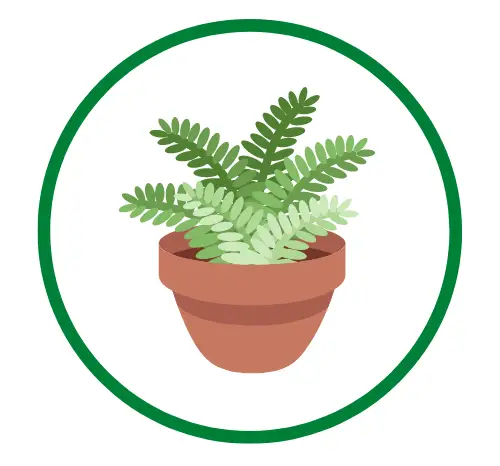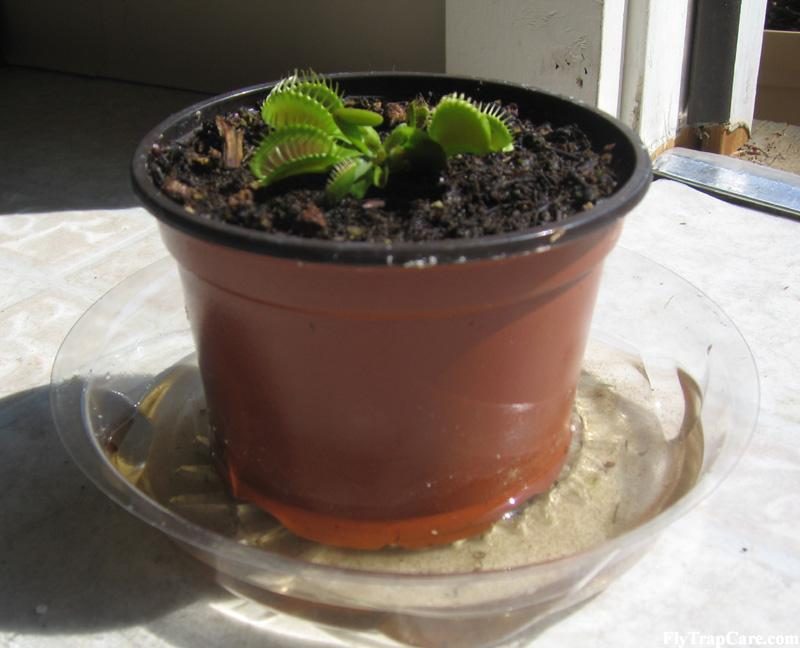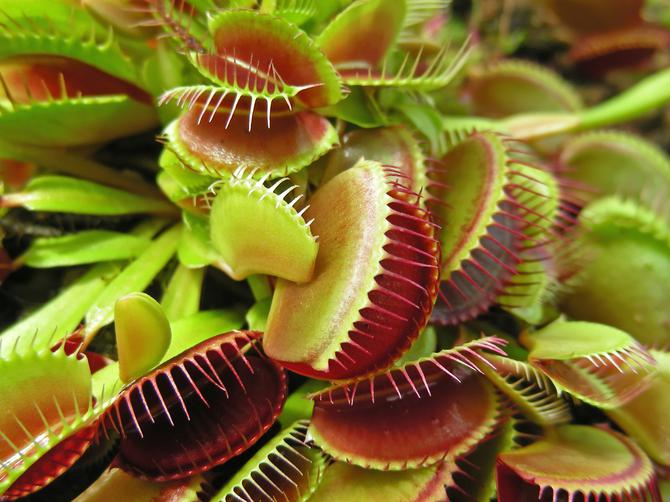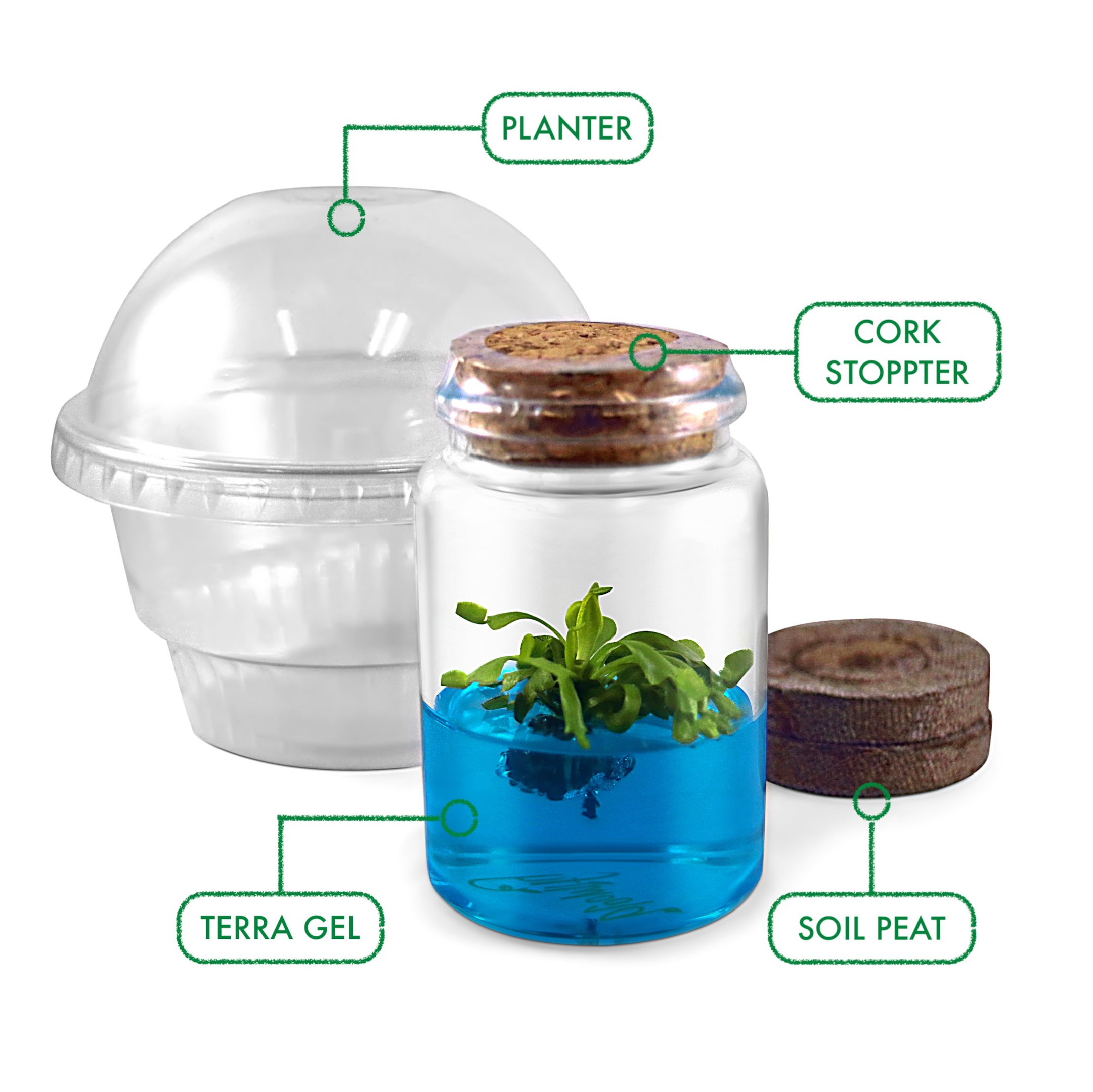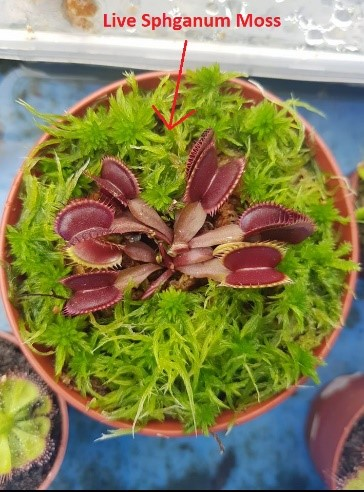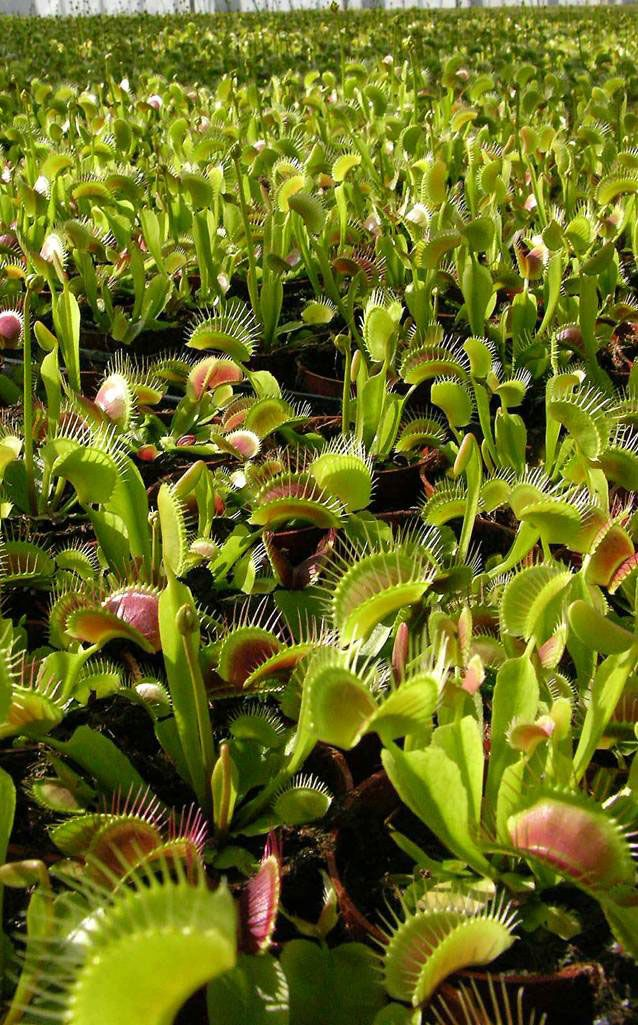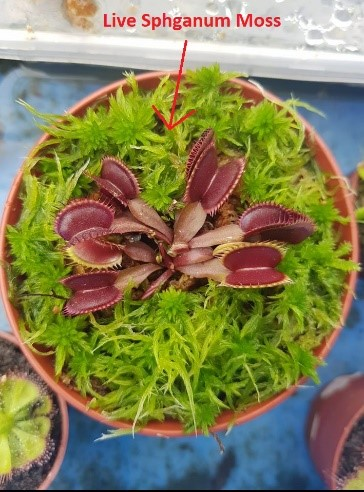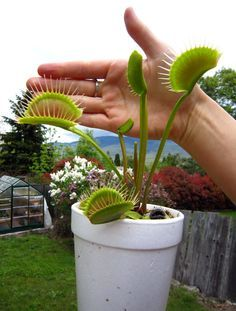If you own a Venus Flytrap plants for the first time, you probably have some concerns about how to water it. Although it is attractive and a fantastic way to get rid of pests, this specific plant cannot survive on insects alone. It can be challenging to properly water Venus flytraps because they need precise humidity and watering levels to remain healthy.
Venus fly traps require watering every two to four days, depending on the season. Always keep the soil moist but not drowned. They require watering when the soil is slightly drier but still moist. The water tray method works well for watering Venus fly traps. Venus fly traps require frequent watering so that their soil never completely dries out and is always moist to the touch.
Depending on where your plant is located and what kind of climate you live in, watering can vary from only every 10-14 days to as frequently as every 2-3 days.
However, keeping the soil damp won’t be enough to make sure your Venus Flytrap is healthy. Keep reading for more information on when and how to water. With some time and care, you will soon have a thriving and happy plant.
It may be challenging for some people to find the right water balance for Venus flytraps. By following the advice in this article, you can keep a Venus flytrap from drowning and becoming overwatered.
How Much Water Does a Venus Flytrap Need?
The Venus flytrap is a native of North and South Carolina in the United States. They are frequently exposed to humidity levels and a lot of precipitation in the wild. When cultivating Venus flytraps indoors, you must make an effort to replicate their natural surroundings, right down to how frequently they are watered.
Venus flytraps need to be watered frequently until the soil is evenly moist. Thereafter, watering is not necessary until the soil is less wet. Never allow the soil to completely dry out.
The health of Venus fly traps can be harmed by both under- and overwatering. The soil should feel damp to the touch but not soaked after watering a Venus flytrap.
Depending on the environment, watering frequency varies considerably. Pushing on the earth to measure its humidity is, therefore, a better method.
Here in my area, summer temperatures can rise as high as 110 degrees Fahrenheit. I almost always water my plants every day in the summer. However, if your plant is inside or in a climate with milder weather, you might only need to water it a few times per week.
When to Water Your carnivorous plants
Venus flytraps often like humid environments and moist, but not overwatered soil. As a result, you must take care to prevent your plant from sitting in completely dry soil, which would induce withering and eventual death. Here are some elements that may influence how quickly the soil around your Venus Flytrap dries out.
Best Types of Water for Venus Flytraps
As vital as it is to make sure your plant receives adequate water, it’s also crucial to keep an eye on the type of water you’re providing. Since conventional tap water frequently contains pesticides and chlorine, using it could harm your plant. I advise the following types of water for Venus flytraps:
- Distilled water
- Rainwater
- Deionized water
- Reverse osmosis water
There are various ways to gather rainwater if your plant is indoors but you’d still like to use it. Think about buying in garden centers, building, or collecting rainwater in items laying around your home to use on plants.
If you mistakenly use tap water with a lot of chlorine or minerals, you can thoroughly soak the soil with one of the suggested water types to get rid of any dangerous impurities.
Don’t worry if you do not always have access to any of these choices. If you test your tap water frequently for total dissolved solids, you can use it on your plant (TDS). You can probably use tap water on your Venus flytrap if the reading is under 50 ppm, though I still advise using clean water.
The Water Tray Approach
The water tray method is quite useful when watering carnivorous plants. It offers guidelines on how to carry out tasks precisely and how much water to provide your Venus fly traps.
Venus flytraps respond best to the water tray technique. The process is as follows:
- Obtain a shallow ceramic or plastic tray with a glaze.
- Put the pot of your plant inside the water tray.
- Rainwater, reverse osmosis water, or distilled water should be used to fill the water tray to a depth of one inch.
- As soon as the water in the tray runs out, refill it.
The Venus flytrap’s soil will stay moist while never exceeding the required humidity using the water tray approach. Being seeps water more freely is another advantage of keeping a small water reserve.
I switch up the trays for my Venus flytraps once or twice a week. If I’ll be gone for a few days, it’s good to leave them with a tray of water.
This method requires a pot with drainage. Consider repotting your plant if the drainage in the current container is inadequate. It is challenging to grow Venus fly traps without drainage holes.
Using top or bottom irrigation
Carnivorous plants are watered using the water method from the bottom rather than the top. Watering Venus flytraps from the top, which is the most typical method, is quite beneficial. Finding the ideal balance is tricky, hence it is usually more difficult.
Carnivorous plant owners usually water from the bottom to prevent overwatering and promote root healthy growth. Roots of the plant are encouraged to spread out and are provided simpler access to the water in the tray.
Depending on the type of nutrient-rich soil used and the stage of development of your plant, there are many modifications to the water tray approach. These topics will be covered in more detail in the following sections.
Different soil compositions call for different watering frequencies
Watering Various Soil Types Keepers of Venus fly traps may use pure moss, such as peat or sphagnum moss with long fibers. Others blend moss with sand or perlite, an aeration and drainage agent.
The following is some guidance even though there is no exact recommendation for how much water to use for each type of soil:
- When using moss as a potting medium, pay close attention to the watering levels to avoid overwatering. Pure moss has a propensity to retain water and does not offer the finest drainage.
- A mixture of moss and sand or perlite is ideal for Venus fly traps. But be sure to check the soil frequently after watering. Keep it moist but never muddy. To help keep too much moisture away from the roots, use sand or perlite.
Venus Flytrap Watering Level Variations during Life Stages
As they develop, Venus fly traps’ water requirements change. You will also need to alter your watering schedule based on the season.
The following is a list of things to keep in mind when watering Venus fly traps at different growth stages:
Seeds: To germinate, venus flytrap needs a very humidity level. They occasionally require a sealed container with a high humidity level and a lot of water. When watering seeds, avoid drowning them. But don’t forget to use more water than usual. The earth must totally absorb the water. Overwatering won’t cause develop root rot in seeds because they don’t yet have roots, and a dry environment will eventually kill them.
Leaf-cutting or pullings: Most Venus flytraps require a very humid environment to flourish, thus cutting or plucking the plant’s leaves will not help. Just like with seeds, make sure the soil is kept drenched with moisture. Overwatering is better to submerge. Right now, the ground can be soft.
Seedlings: After sprouting from seeds or leaf cuttings, a Venus flytrap does not require a lot of moisture. It needs humid but not drenched surroundings.
Young/ Adult Venus fly traps: Venus fly traps, either young or old Never flood the soil or let it dry up; just keep it moist all the time.
Depending on the season, Venus fly traps may consume more or less water. For instance, during the growing season, Venus flytraps demand more water. Additionally, in warmer climates, some of the water tends to evaporate.
When inactive, venus fly traps use far less water. This is just a seasonal change, not a concern.
Venus flytraps: Overwatering vs. Underwatering
Both excessive and inadequate watering are harmful to Venus flytraps. By weakening the plant, they can finally kill it.
If a Venus flytrap is submerged in water, it will suffer serious damage. The plant will start to droop or look downcast (read article on how to fix droopy Venus Fly trap). Furthermore, the leaves will begin to dry out. If the soil dries out completely, the plant might as well too, and die. The plant will perish if the bulb dries up.
A Venus fly trap should never be overwatered. We can tell if a strategy has been overwatered by a few telltale indications. They could first cause a coating of white mold to form in the soil. Although the mold won’t harm the plant, it is an indication of too much moisture. Additionally, algae growth on the water tray is a sign of high humidity without adequate light.
When Venus flytraps are overwatered, root rot can occur.
The plant’s roots are consumed by a harmful condition called root rot, which ultimately causes the plant to die. A Venus flytrap can be saved from root decay thanks to treatment. The following video explains the steps:
Both underwatering and overwatering have detrimental effects, as you now know. You should change the frequency of watering your Venus flytrap accordingly. To ensure success, choose a pot with drainage and, ideally, soil with sufficient aeration and drainage.
Venus fly trap can typically die far more quickly from underwatering than from overwatering. Therefore, if in doubt, I advise drinking more water rather than less.
When Venus flytraps are overwatered, root decay can occur. A dangerous ailment called root decay consumes the roots of the plant and eventually destroys it. Fortunately, root decay can be treated to rescue a Venus flytrap. The steps are described in the video below:
You now understand the detrimental effects of both underwatering and overwatering. You should modify the watering schedule for your Venus fly trap. Use a pot with drainage and, preferably, soil that has sufficient aeration and drainage to ensure success (Venus Flytrap Soil Guide).
Underwatering often causes Venus fly trap to pass away far more quickly than overwatering does. As a result, if in doubt, I suggest drinking more water than less.
Watering Your carnivorous plant in the Winter months
Venus Flytraps go into a winter dormancy period, where their growth slows. This may seem like a cause for concern, but in actuality, the dormant period is an essential time for the plant to rejuvenate. You will know your plant is dormant when:
It no longer produces flowers
The leaves turn slightly brown or black along the edges (dead leaves)
The traps will no longer work
Between November and March, your Venus Flytrap will need less water than usual. Instead of keeping the soil thoroughly damp, the soil can be nearly dry, but make sure it is still damp near the base of the plant and by the roots. During the dormant period, your plant may only need to be watered once or twice per month.
If you’re using a drip tray, remove it during the dormant period to avoid the risk of plant death or bacterial growth. Overwatering during the dormant period will lead to the death of your plant.
FAQ
When should a Venus flytrap be watered?
Venus Flytraps should be watered when the soil is just barely damp and should be watered to the point where the soil is thoroughly saturated then allowed to dry to the point of being just damp before watering again. In the summer months, smaller pots can dry out in just a day if the very hot weather and dry.
Do Venus flytraps need constant water?
Venus Flytraps require very pure water. Your tap water is likely to be too high in dissolved solids—minerals and salts—that may kill a Venus Fly trap, possibly within weeks.
Can you overwater a Venus fly trap?
In general, it is almost impossible to overwater Venus flytraps. In fact, flytraps can survive being completely submerged in water for a couple of days. However, if Venus flytraps are kept too wet for too long, it will lead to problems.
How often do you feed and water Venus Fly Trap?
The traps on your plant are modified leaves and should be fed regularly (about once a week to two weeks). Plants can survive for extended periods without being fed but they will grow more slowly. If your plant is being kept outdoors in the summer, it should be fine catching prey on its own.
Should I mist my Venus Fly Trap?
None of those need any extra humidity, and misting may cause more damage than good. Also, as many others will tell you, terrarium life is not good for VFTs and Sarracenia.
What is the best way to water a Venus fly trap?
Keep the pot in standing water at all times. Never allow the soil to dry out completely. The flytrap requires mineral-free water. So bottled distilled water, water passed through a reverse-osmosis unit or collected rain water are best.
How hard is it to keep a Venus flytrap alive?
Although they appear self-sufficient, Venus flytraps are notoriously difficult to care for. This has little to do with the environment and everything to do with how woefully unprepared most people are to meet their needs. As a result, plants that normally live for years in their native habitat, last only a few months.
Conclusion
Your Venus Flytrap is a versatile and intriguing plant. Whether it is getting some wintertime rest or trapping insects in the summer, this carnivorous plant will function best when it is adequately watered. Paying attention to its water needs and providing it with the right type of water will keep your plant healthy for years to come.
